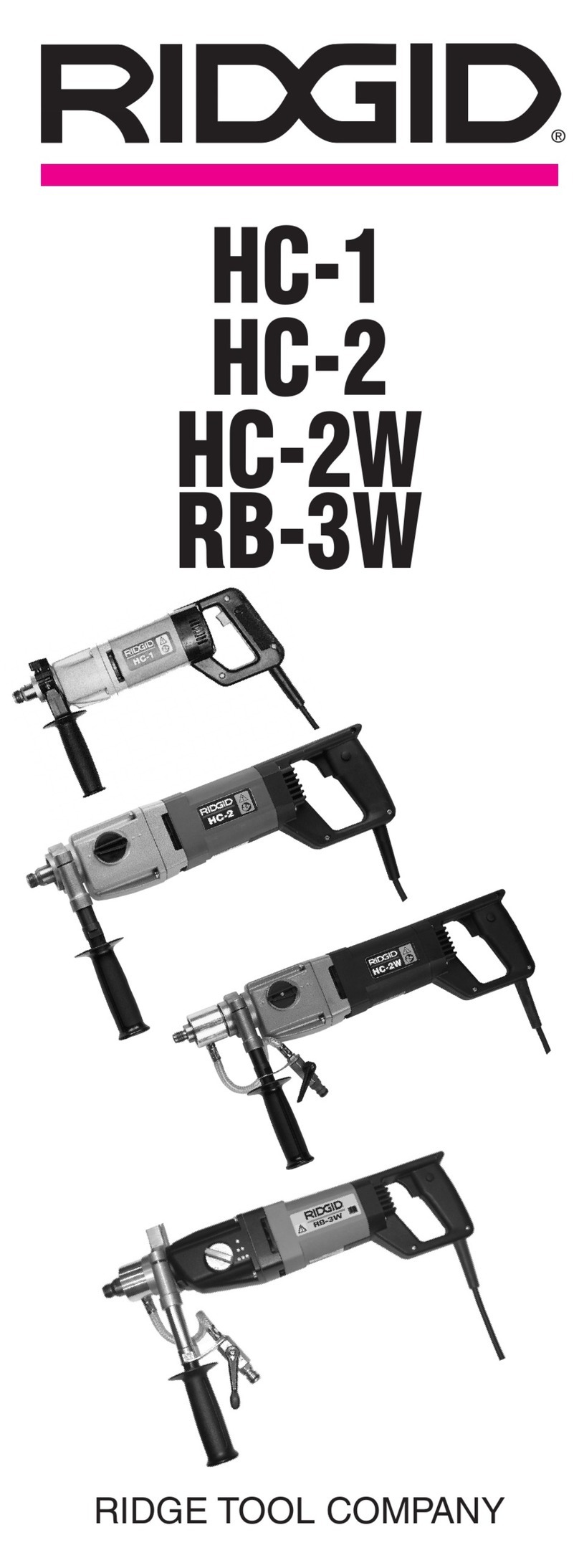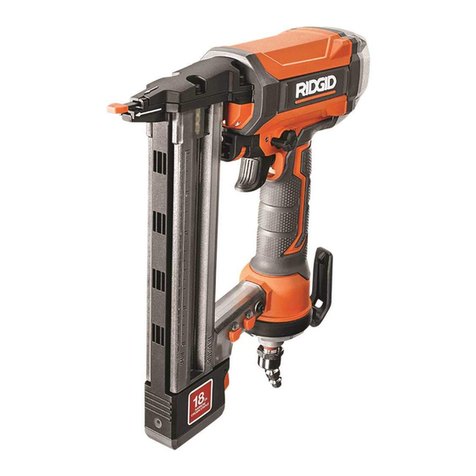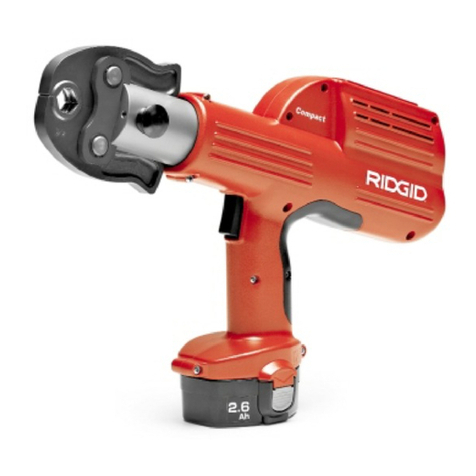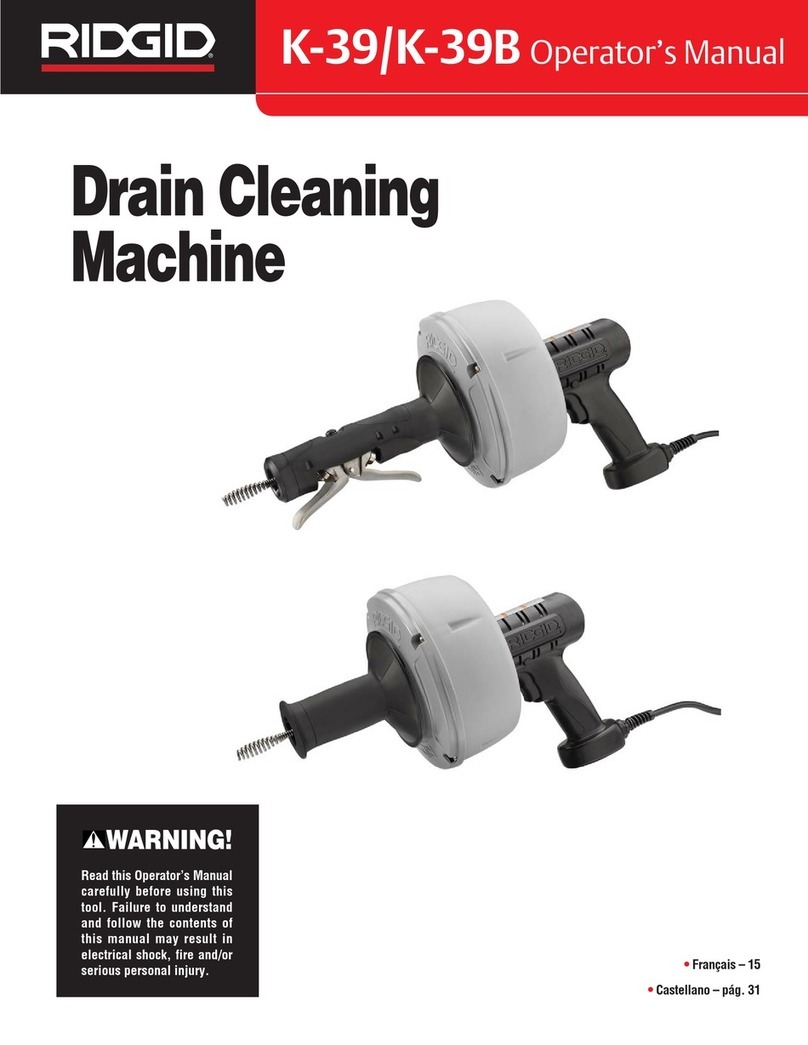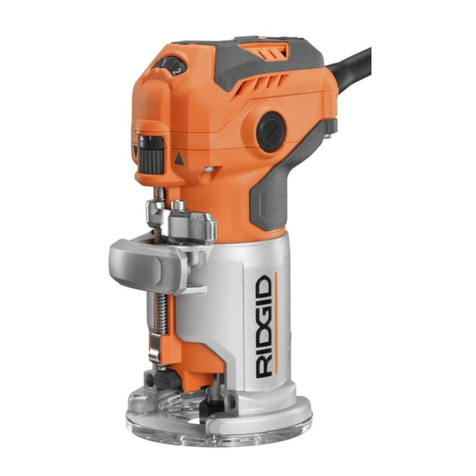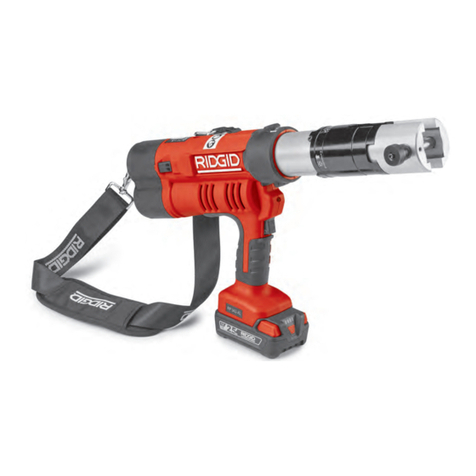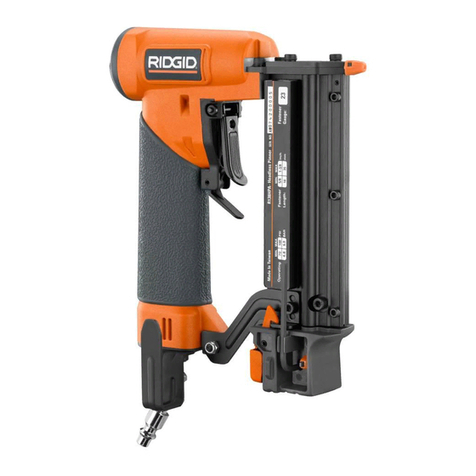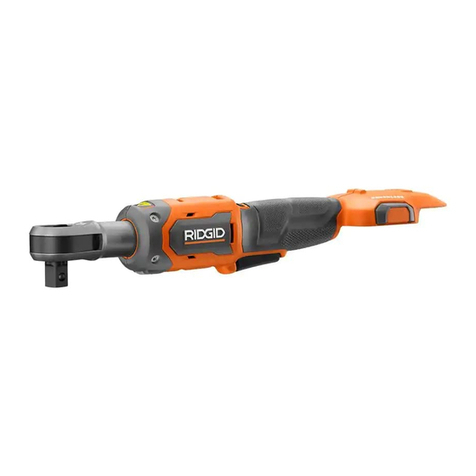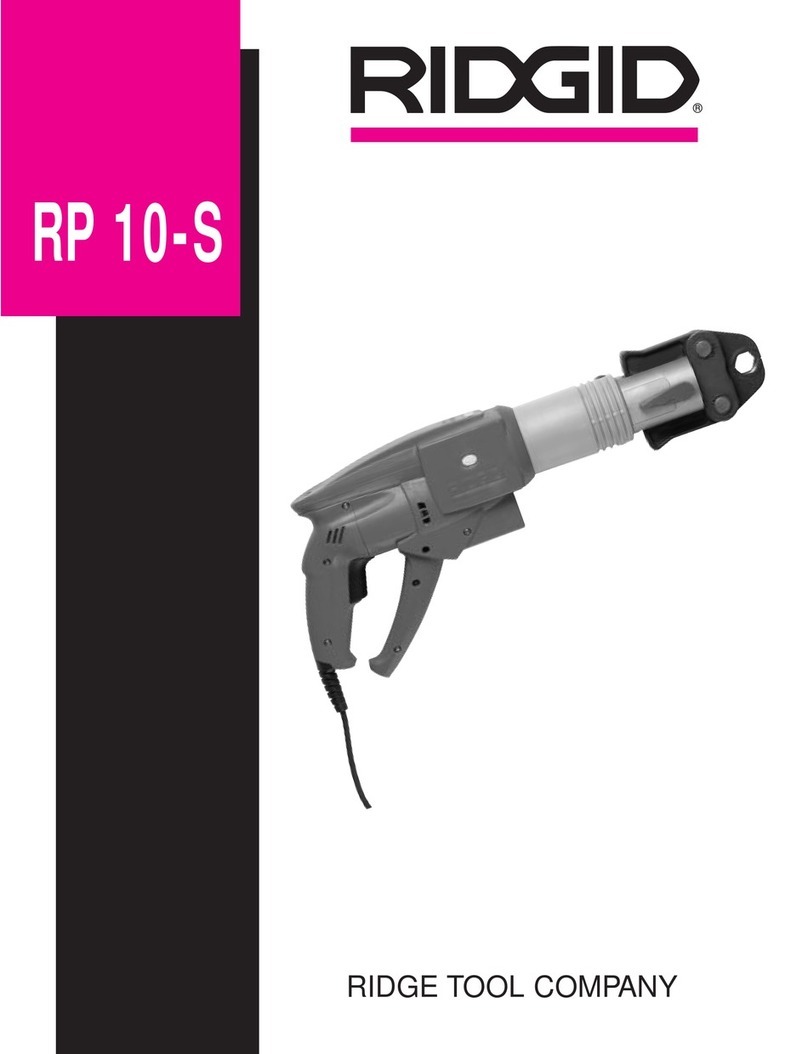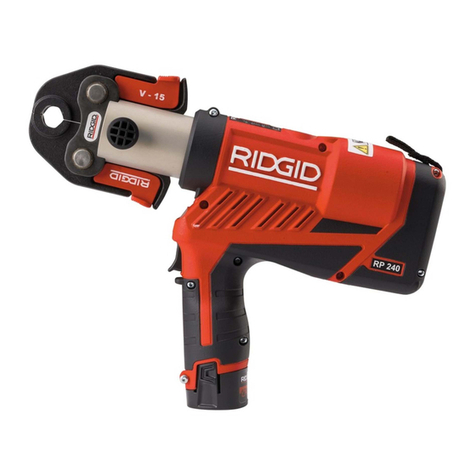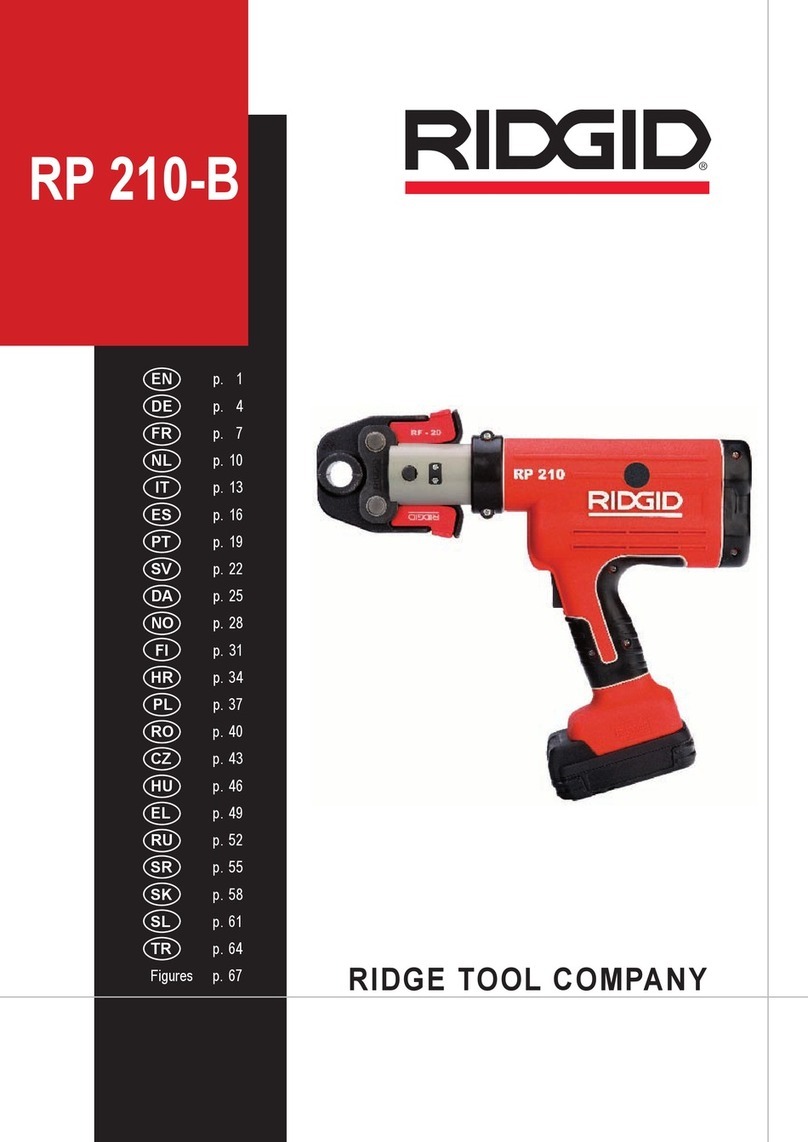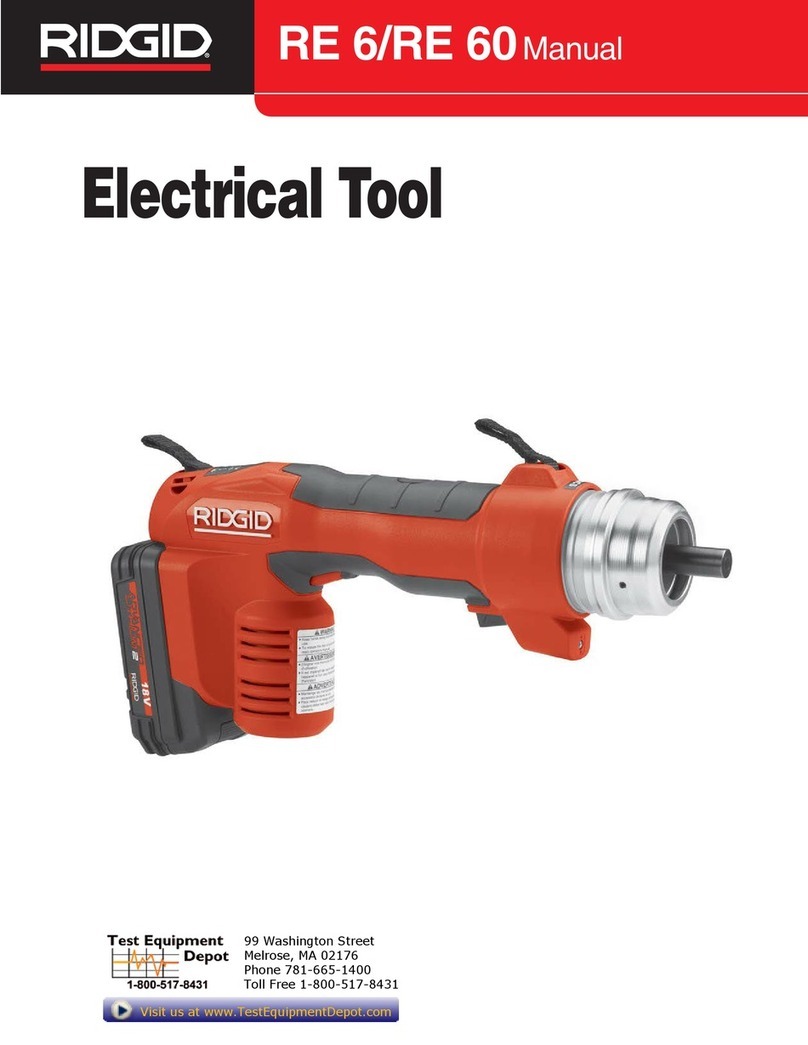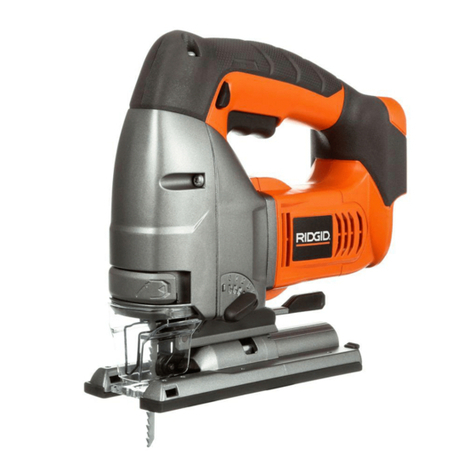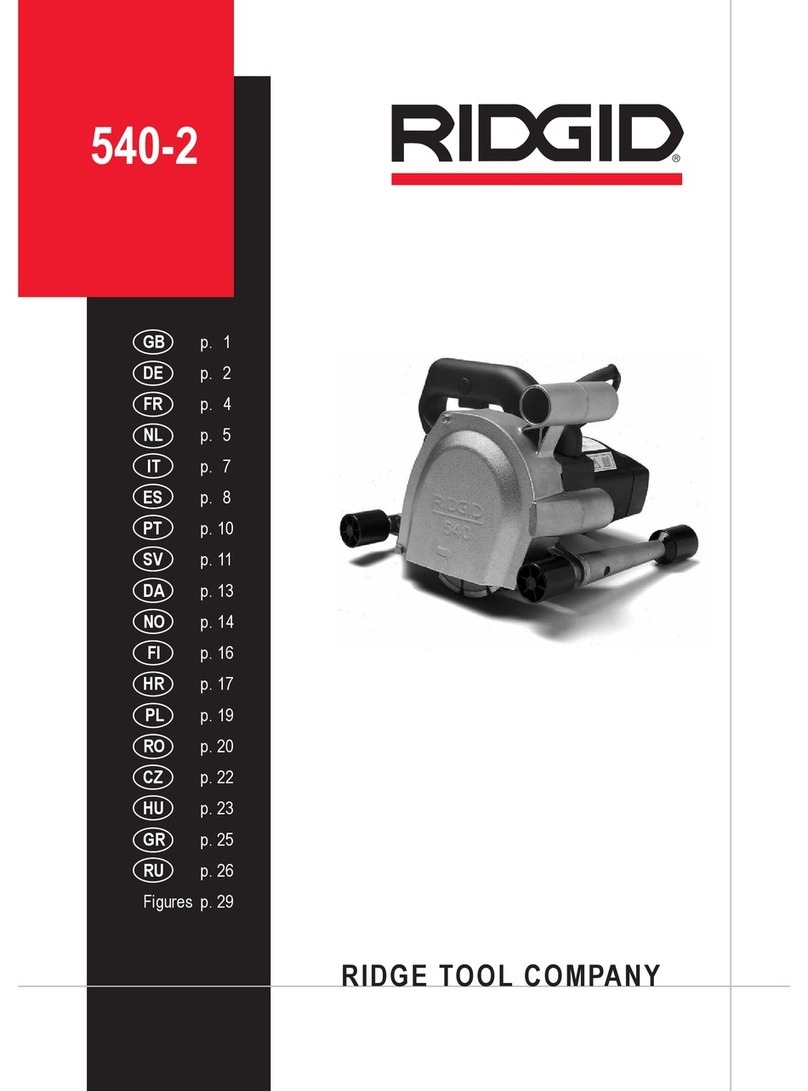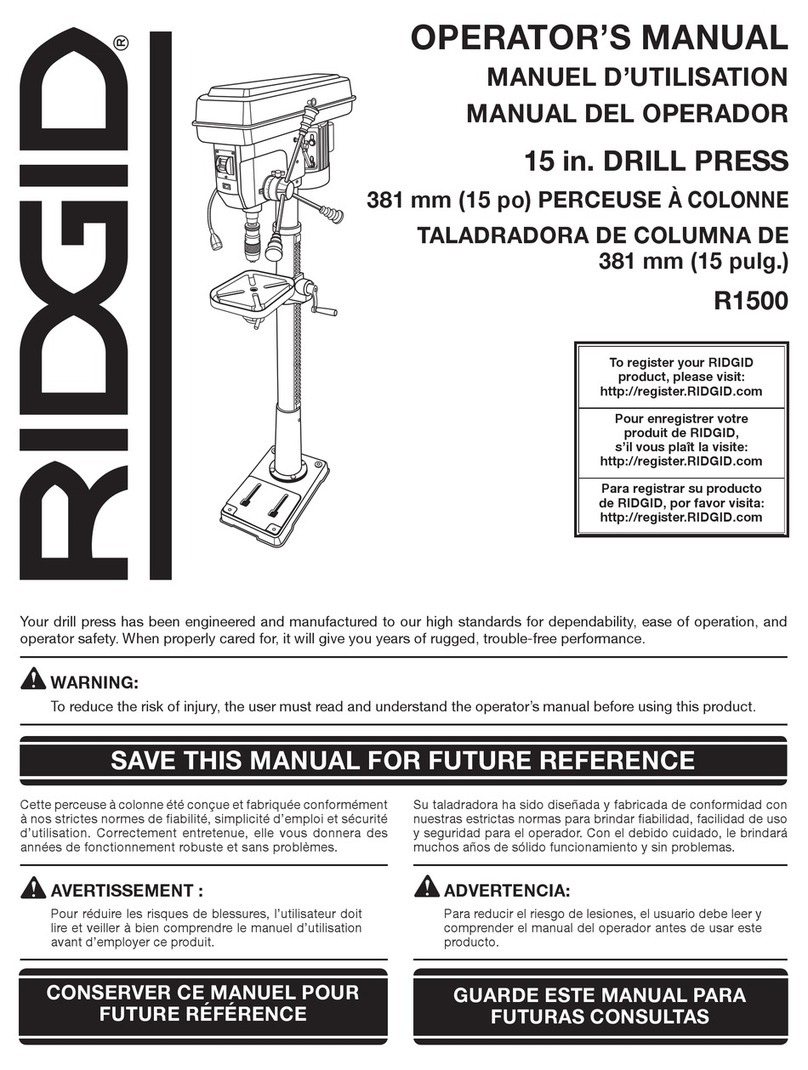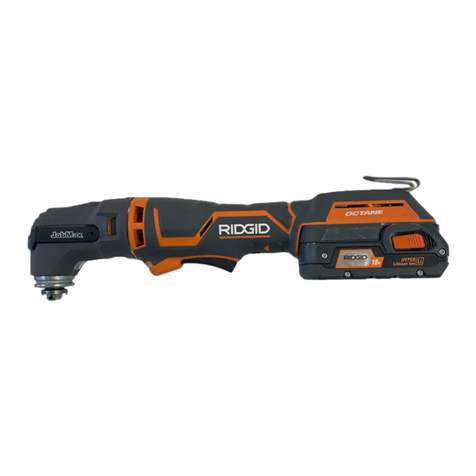
•Disconnect the plug from the power
source and/or remove the battery pack, if
detachable, from the power tool before
making any adjustments, changing ac-
cessories, or storing power tools. Such
preventive safety measures reduce the risk
of starting the power tool accidentally.
•Store idle power tools out of the reach
of children and do not allow persons
unfamiliar with the power tool or these
instructions to operate the power tool.
Power tools are dangerous in the hands of
untrained users.
•aintain power tools and accessories.
Check for misalignment or binding of
moving parts, breakage of parts and
any other condition that may affect the
power tool’s operation. If damaged,
have the power tool repaired before
use. Many accidents are caused by poorly
maintained power tools.
•Keep cutting tools sharp and clean.
Properly maintained cutting tools with
sharp cutting edges are less likely to bind
and are easier to control.
•Use the power tool, accessories and
tool bits etc. in accordance with these
instructions, taking into account the
working conditions and the work to be
performed. Use of the power tool for oper-
ations different from those intended could
result in a hazardous situation.
•Keep handles and grasping surfaces
dry, clean and free from oil and grease.
Slippery handles and grasping surfaces
do not allow for safe handling and control of
the tool in unexpected situations.
Battery Tool Use And Care
•Recharge only with the charger speci-
fied by the manufacturer. A charger that is
suitable for one type of battery pack may
create a risk of fire when used with an-
other battery pack.
•Use power tools only with specifically
designated battery packs. Use of any
other battery packs may create a risk of
injury and fire.
•When a battery pack is not in use, keep
it away from other metal objects, like
paper clips, coins, keys, nails, screws or
other small metal objects that can make
a connection from one terminal to an-
other. Shorting the battery terminals to-
gether may cause burns or a fire.
ing a power tool. Do not use a power
tool while you are tired or under the
influence of drugs, alcohol, or medica-
tion. A moment of inattention while operat-
ing power tools may result in serious per-
sonal injury.
•Use personal protective equipment. Al -
ways wear eye protection. Protective
equipment such as dust mask, non-skid
safety shoes, hard hat, or hearing protec-
tion used for appropriate conditions will
reduce personal injuries.
•Prevent unintentional starting. Ensure
the switch is in the off-position before
connecting to power source and/or bat-
tery pack, picking up or carrying the
tool. Carrying power tools with your finger
on the switch or energizing power tools
that have the switch ON invites accidents.
•Remove any adjusting key or wrench
before turning the power tool ON. A
wrench or a key left attached to a rotating
part of the power tool may result in per-
sonal injury.
•Do not overreach. Keep proper footing
and balance at all times. This enables
better control of the power tool in unex-
pected situations.
•Dress properly. Do not wear loose cloth-
ing or jewelry. Keep your hair, clothing,
and gloves away from moving parts.
Loose clothes, jewelry, or long hair can
be caught in moving parts.
•If devices are provided for the connec-
tion of dust extraction and collection fa-
cilities, ensure these are connected and
properly used. Use of dust collection can
reduce dust-related hazards.
•Do not let familiarity gained from fre-
quent use of tools allow you to become
complacent and ignore tool safety prin-
ciples. A careless action can cause severe
injury within a fraction of a second.
Power Tool Use and Care
•Do not force power tool. Use the correct
power tool for your application. The
correct power tool will do the job better
and safer at the rate for which it is de-
signed.
•Do not use power tool if the switch does
not turn it ON and OFF. Any power tool
that cannot be controlled with the switch is
dangerous and must be repaired.
3
999-995-112.08_REV. A
RP 240 Press Tool
